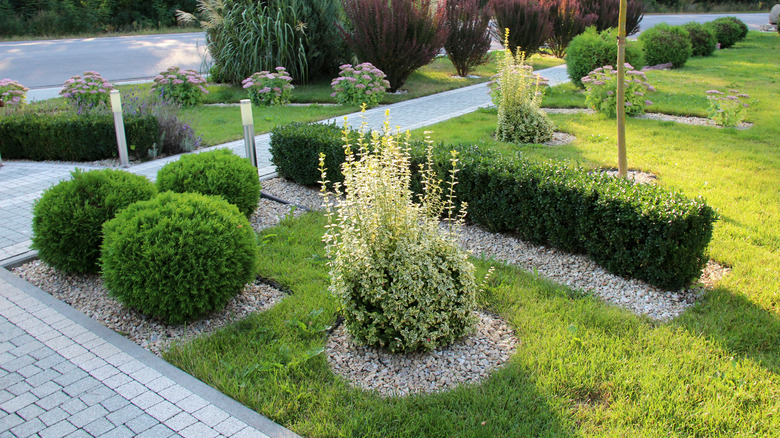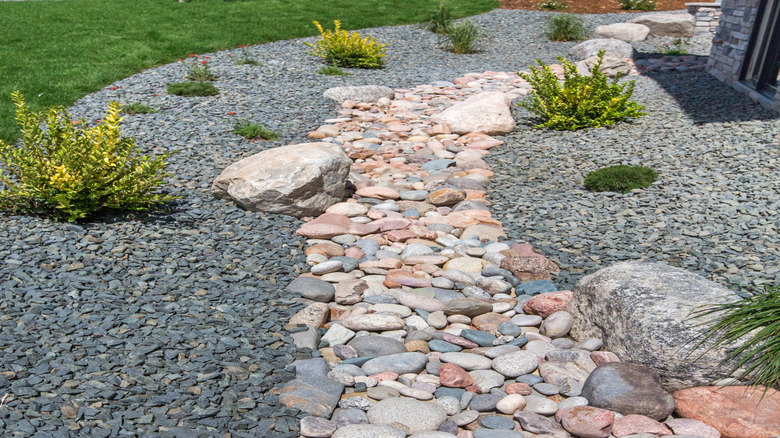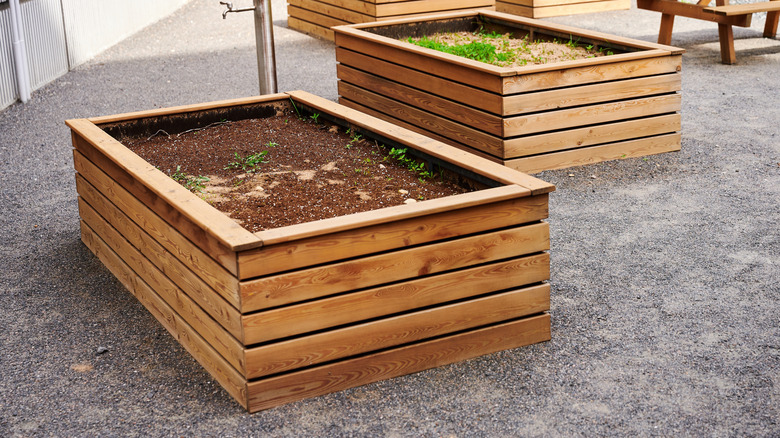How To Use Gravel For Better Landscaping Drainage On Your Home Projects
Whether you live in a notoriously wet climate like the Pacific Northwest or a place that gets short periods of heavy rains like Florida, it's important to have proper drainage for houseplants and in your landscaping. Having adequate landscaping drainage protects your home's foundation, prevents erosion, and keeps your plants healthy by avoiding waterlogged soil. Luckily, you don't have to spend a fortune on drainage solutions — you can use simple gravel, a cost-effective and versatile material that's excellent for improving water flow in your yard.
There are several ways to utilize gravel to mitigate drainage problems, including using it for gravel paths and driveways. However, two uniquely popular ways to use gravel are by creating a dry creek bed and utilizing it as a base layer in planter beds. Both of these methods effectively manage water runoff while also adding aesthetic appeal to your landscape. Dig out your gardening gear and get ready to transform your yard into a beautifully drained oasis, and learn why rocks and gravel are the perfect choice for your yard's drainage.
Dry creek beds
Integrating a dry creek bed into your landscaping is an excellent way to combine aesthetics with effective drainage. These look like a natural stream or creek bed, hence the appropriate name. When you're in a dry spell, you'll see a beautiful arrangement of rocks and gravel, but when you have a downfall, the water will flow through it, channeling excess runoff away from your home and garden. This functional arrangement of gravel will help prevent rainwater from pooling in your yard and keep it away from your home's foundation. Even better, dry creek beds are low-maintenance, requiring only occasional clearing of debris to ensure continued water flow.
By using different-sized gravel, you can create a more natural and visually appealing effect, while also optimizing water flow and percolation within the bed. After developing a plan and excavating the land, use landscaping fabric to prevent gravel from sinking into the soil over time and keep weeds from growing up through the bed. Next, use a layer of crushed gravel as a base to provide great permeability and a stable foundation for the creek bed. Then, you'll use larger stones and boulders to define the edges and create a natural, sculptural element within the design. Finally, fill in the gaps with river rock or smaller gravel pieces to completely conceal the landscape fabric and complete the natural, aesthetic appearance.
Level up your planter beds
Having raised planter beds in your landscaping can significantly enhance curb appeal and provide dedicated spaces for plants to thrive. It's also one of the best small backyard landscaping ideas that will transform your space by making it feel more organized and inviting. Historically, it's been thought to avoid gravel at the bottom of a planter bed since it would create a "perched water table" effect, potentially leading to waterlogged soil and root rot. However, if your planter bed is built directly on concrete, asphalt, or compacted subsoil where water simply cannot drain away, a drainage layer with an exit point is essential.
If your planter bed is on a solid surface (like a patio), you'll need to make sure that it has drainage holes at the bottom, ideally spaced every 12 to 15 inches. Place a layer of landscaping fabric over the holes to prevent soil from draining through them. Then, add a two- to four-inch layer of gravel for drainage. It's best to keep this to pea gravel or 3/4-inch crushed stone — any larger and you'll lose valuable space for your plant's roots and soil. Lay another piece of landscape fabric on top of the gravel to prevent the soil from mixing with the gravel — this will ensure that the drainage remains effective and long-lasting.


